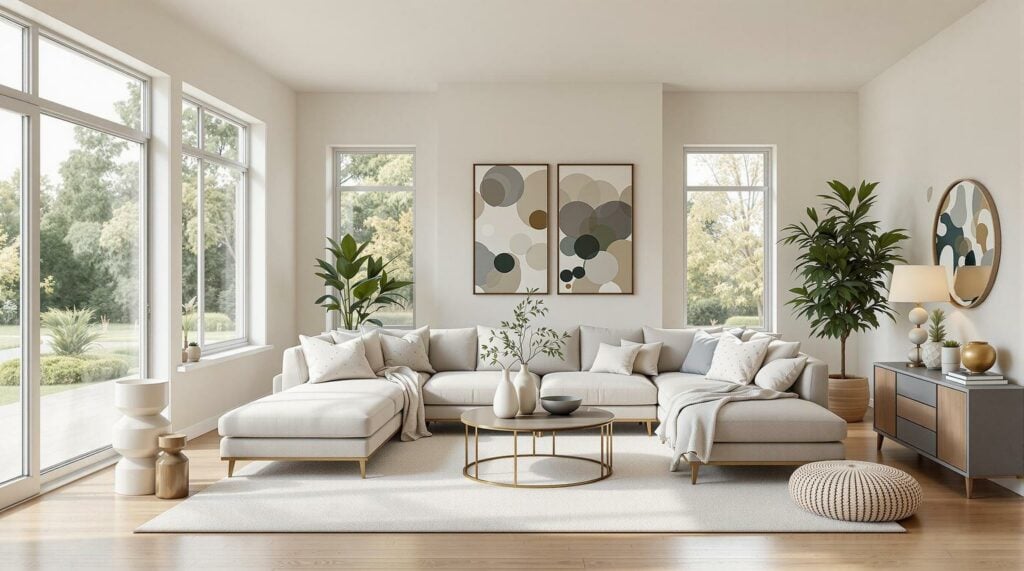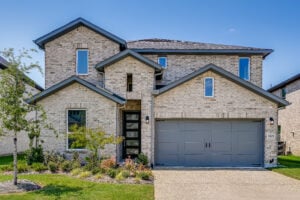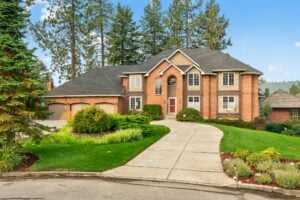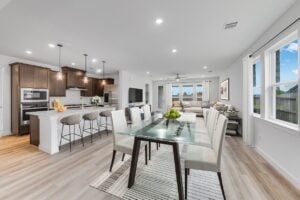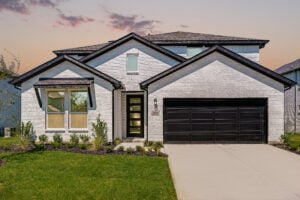In real estate, a great video tour can help sell a property faster by showing off its best features and saving time for both buyers and agents. Here’s a quick rundown of 10 simple tips to edit better real estate videos:
- Organize the flow: Start with the exterior, move through the interior logically, and end with the standout feature.
- Use smooth transitions: Avoid jarring cuts and stick to simple effects like cross dissolves.
- Balance colors and lighting: Adjust white balance, exposure, and use consistent color grading.
- Set the right speed: Slow down for key areas like kitchens and speed up less important spaces.
- Add text overlays: Highlight key details like room dimensions or upgrades with clean, simple text.
- Remove camera shake: Stabilize footage using tools or equipment like gimbals or tripods.
- Mix shot distances: Use wide, medium, and close-up shots to create variety and show details.
- Pick background music: Choose music that matches the home’s style and keep it subtle.
- Keep effects simple: Avoid over-the-top effects; focus on subtle enhancements.
- Fix visual distractions: Remove clutter, reflections, or poor shots to keep the video clean.
These tips can help you create polished, engaging videos that make properties stand out. Whether you’re editing yourself or hiring a professional, following these steps can make a big difference.
Edit Real Estate Video Like A Pro | Entire Workflow Revealed
1. Create a Property Flow
Organize your tour to follow the natural layout of the property while keeping viewers interested. Begin with an exterior shot, then move through the entryway, living spaces, and bedrooms, wrapping up with the property’s standout feature. Ending with the most impressive element helps leave a lasting, positive impression. This logical sequence also ensures smooth transitions (see Tip 2).
2. Choose Smooth Transitions
Stick to smooth, professional transitions to help viewers move effortlessly between spaces while keeping the spotlight on the home’s features.
Use consistent cross dissolves to ensure a natural flow and avoid jarring cuts. Skip over-the-top effects that can pull attention away from the property itself.
And don’t forget: balanced color and lighting are key for a polished finish (more on that in Tip 3).
3. Balance Colors and Lighting
Once your cuts are smooth, it’s time to focus on color and lighting to make every frame look its best. Consistency in lighting and color helps ensure accurate, natural-looking visuals.
Start by adjusting the white balance for each room to reflect its true colors. Then, fine-tune the exposure so that bright windows and darker interiors feel balanced. If you’re working with both daylight and artificial light, aim for a neutral color temperature to avoid any unwanted color shifts.
Stick to one LUT (Lookup Table) across all your clips for a cohesive look. Enhance vibrance carefully – just enough to add warmth to the scene without altering the true colors of materials. Use your editor’s color-matching tool to harmonize footage shot with different cameras or at varying times of day.
4. Set the Right Speed
Once you’ve planned the flow of your property video, fine-tune the speed of your footage to emphasize standout features and keep the audience interested. Use slower clips for spaces like kitchens, living rooms, or master bedrooms to give viewers time to absorb the details. On the other hand, speed up less important areas like hallways or staircases to keep the video moving.
For open-concept layouts, start with a slow, wide shot to set the scene. Gradually increase the speed as you shift focus to specific details, ensuring the transitions between these changes are smooth and natural.
Finally, weave in property-specific details to add depth and keep the viewer engaged.
5. Add Property Details
Once you’ve set the tone, it’s time to showcase the property’s features with clear and concise text overlays.
Use overlays and graphics to highlight important details like room dimensions, recent renovations, finishes, energy-saving upgrades, or outdoor features. Keep the visuals clean and uncluttered to maintain focus on the property.
Place the text overlays in the lower third of the frame, sticking to a single font and consistent color scheme. Limit overlays to two per shot and sync them with the video’s pacing. For example, display the lot size when showing exteriors or label rooms as they appear on screen. This approach informs viewers without pulling their attention away from the visuals.
sbb-itb-82c5f45
6. Remove Camera Shake
Shaky footage can be distracting and make your work look less polished. Start by stabilizing your clips before applying any color grading or effects. For minor shake, use an auto-stabilization tool. If the shake is more noticeable, adjust the position and rotation manually. Crop just enough to eliminate black edges while keeping as much resolution as possible.
When filming, tools like tripods, gimbals, or steadicams can help keep your shots steady. During tracking shots, try to minimize vertical movement for smoother results. Once your footage is stable, mix up your shot distances to keep things visually engaging.
7. Mix Shot Distances
Once your footage is steady (see Tip 6), mix up your shot distances – wide, medium, and close-up – to create a smooth visual journey through the property.
Start each room with a wide shot, ideally from a doorway or corner, to give a full view. In spaces like living rooms and kitchens, capture multiple angles to emphasize how the areas connect.
For medium shots, highlight key features. In kitchens, set the camera at waist level to show off countertops and appliances. In bedrooms, frame built-in storage or seating areas to give a sense of space.
Close-ups are perfect for showcasing standout details. Highlight things like custom cabinet hardware, appliance controls, intricate molding, detailed tile work, scenic window views, or smart home features.
When transitioning between rooms, return to wide shots to keep the viewer oriented. For exterior shots, start with a broad ground-level or drone view, then zoom in on landscaping, outdoor spaces, or architectural details.
8. Select Background Music
Once you’ve balanced your shot distances, it’s time to pick background music that matches your tour’s mood and pace. Music plays a key role in shaping how viewers perceive the property. For luxury homes, consider refined piano or orchestral tracks. For mid-range properties, light acoustic or ambient instrumentals work well. Starter homes can benefit from subtle pop or light jazz.
Make sure you secure the necessary synchronization and performance rights, and always use high-quality audio files to ensure smooth playback.
Here are some tips for a polished result:
- Keep the music volume low and use smooth fade-ins and fade-outs.
- Lower the music (ducking) during important highlights to make key details stand out.
- Test your audio mix on desktop, mobile, and TV to ensure it sounds clear across all devices.
9. Keep Effects Simple
After completing your audio mix (see Tip 8), use effects with care to ensure your video maintains a polished look while keeping the focus on the property’s features. Subtle enhancements like soft vignettes or delicate lens flares can highlight architectural elements without pulling attention away from the main visuals [2].
10. Remove Visual Problems
Finish your editing process by cleaning up any visual distractions that might take away from the overall presentation of the home.
- Declutter the Scene: Crop out or mask stray cables, personal belongings, or unnecessary objects. If the clutter is overwhelming, consider switching to a cleaner angle or using a cutaway shot.
- Fix Reflections: Blur or mask unwanted reflections in windows or mirrors. If the adjustment feels unnatural, it’s better to switch to a different shot.
- Replace Poor Shots: When fixes stand out too much, use a better take or adjust the pacing to seamlessly cover the issue.
Video Editing Techniques Comparison
This section has been removed to avoid redundancy and improve the article’s flow. The content previously covered here overlaps with Tip 3 and does not contribute additional insights. The article now transitions directly from Tip 10 to the Summary for a smoother and more concise narrative.
Summary
To create top-notch real estate video tours, focus on key editing techniques like maintaining a natural flow, using smooth transitions, refining color grading, and setting the right pacing. These methods turn raw footage into compelling videos that help buyers picture themselves in the property.
For those who prefer expert help, HomeJab offers complete video production services. Their team of photographers and editors delivers polished videos within 24 hours, earning an impressive average rating of 4.8/5 from 887 reviews.
"HomeJab’s photographers delivered stunning drone shots and interior captures that showcased my listing perfectly!" – Betsy Moston
Whether you choose to handle editing yourself or work with professionals, these strategies can help you create standout real estate tours that connect with buyers in today’s competitive market.

